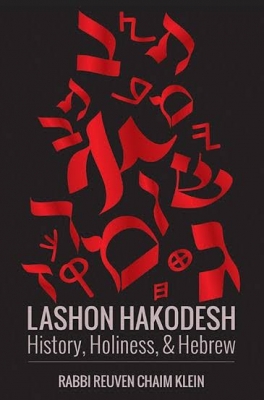Lashon Hakodesh: History, Holiness & Hebrew
Lashon Hakodesh: History, Holiness & Hebrew
A Linguistic Journey from Eden to Israel
Rabbi Reuven Chaim Klein
Mosaica Press, 2015 (2nd Ed.)
Hardcover, 326 pages
$24.99 from Amazon
Reviewed by Shlomo Liberman
In Jewish Literature, the Hebrew language is referred to as Lashon Hakodesh ("the Holy Tongue") because of its intrinsic sacredness, unlike any other language known to man. Lashon Hakodesh: History, Holiness & Hebrew seeks to understand the origins of this holiness, following its history but also covering related languages like Aramaic and other Jewish languages such as Yiddish and Ladino.
It is a gargantuan task and requires a special author. Rabbi Reuven Chaim Klein is uniquely qualified. He is a native of California, who graduated from the Emek Hebrew Academy and Yeshiva Gedolah in Los Angeles and then continued studying at the famed Mir Yeshiva in Jerusalem and Beth Medrash Govoha of America in Lakewood, NJ, receiving rabbinic ordination from several leading rabbis. His papers have been published in prestigious journals such as Journal of Halacha and Contemporary Society (New York), Jewish Bible Quarterly (Jerusalem) and Kovetz Kol HaTorah (London). He currently lives with his family in Beitar Illit.
The book starts off by claiming that the language of Adam was Lashon Hakodesh. One of the proofs he brings is that Adam named his mate isha (אישה). In no other language is the word for woman so similar to the word for man. In Aramaic woman is itssa (אתתא). while a man is called gavra (גברא). Similarly, in Greek, the word for a woman is gini while the word for man in anthro.
The famous joke is that every Jew has at least three opinions., Rabbi Klein trumps this by bringing six different Talmudic versions – one being that Adam's spoken language was Aramaic but the written one Lashon Hakodesh.
He then traces the development of languages after the Tower of Babel, and later brings sources to prove that Joseph spoke Lashon Hakodesh. He doesn't shy away from the views of Academia, which largely rejected the idea that Lashon Hakodesh predates all other languages.
The book continues in many chapters tracing the decline of Lashon Hakodesh after the First Temple was destroyed and identifying the reason for incorporation of many foreign words and place names from Aramaic, Greek, and Roman in the Bible, Mishna, and other Jewish sources. It concludes with the development of modern Hebrew and Eliezer Ben Yehuda's role.
The book includes extensive and detailed appendices and a biographical index of all leading rabbis. The appendices cover The Scripts of Lashon Hakodesh, Egyptian Names in the Bible, Prayers in Aramaic, and a discussion on the discourse of Maharal, Rabbi Yehuda Loew of Prague (1520-1609) on Lashon Hakodesh.








Comments